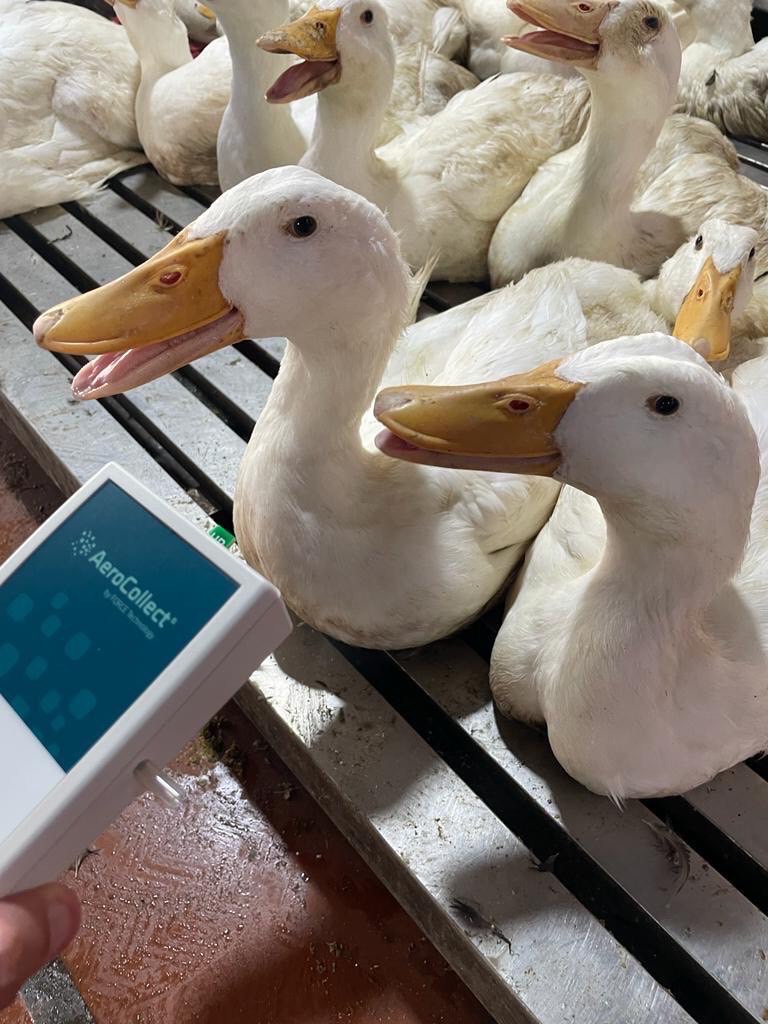Enhancing animal disease detection through innovative technologies
21/12/2022 , Phnom Penh

Air samplers being used in live bird market in Cambodia
©FAO/Filip Claes
Poultry in Cambodia is the most challenging sector in terms of avian influenza transmission risks due to value chain complexity and the high volume of cross-border movement. The ability to quickly detect emerging infectious diseases is essential to ensure that prevention and control measures are put in place to curb transmission and devastating outbreaks in the country.
FAO ECTAD has partnered with national counterparts in Cambodia to invest in novel technologies to improve sampling techniques and increase the speed and versatility of diagnostics. Air samplers have been piloted in several high-risk interfaces, such as live bird markets and farms. The use of this innovative approach has resulted in a more cost-effective, rapid and safe way to obtain continuous surveillance data compared to the classic way of sampling animals. This type of sampling can also detect multiple pathogens circulating in the areas, making this detection capability more comprehensive.
Furthermore, to expedite the detection of avian influenza, FAO has piloted direct field-based sequencing using portable, real-time DNA and RNA sequencing (MinION). This technology can deliver full avian influenza genomes within 6 hours after sampling, reduces transport costs and waiting times for disease confirmation and supports rapid response. Combining this technology with metagenomics, FAO can detect up to 75 pathogens within 48 hours of sampling. By advancing sequencing technologies both in the laboratory and in the field, FAO can greatly decrease detection times and enhance the timely response to avian influenza and other emerging infectious diseases.
